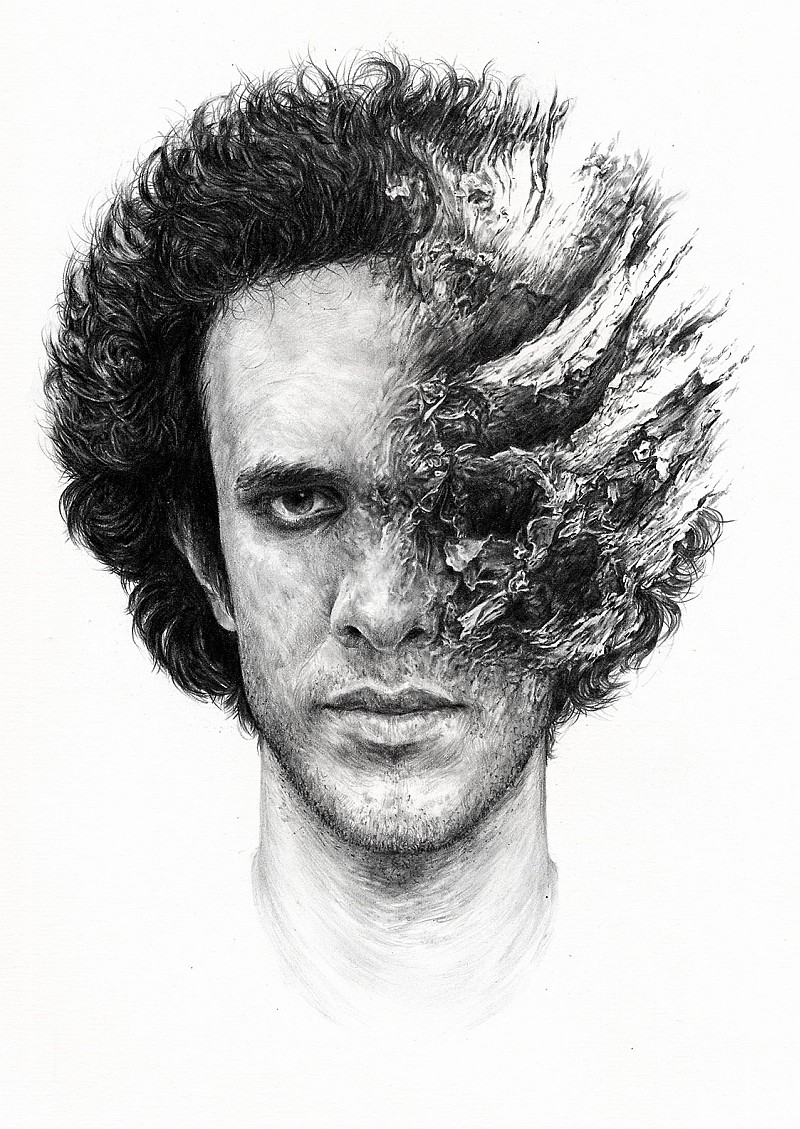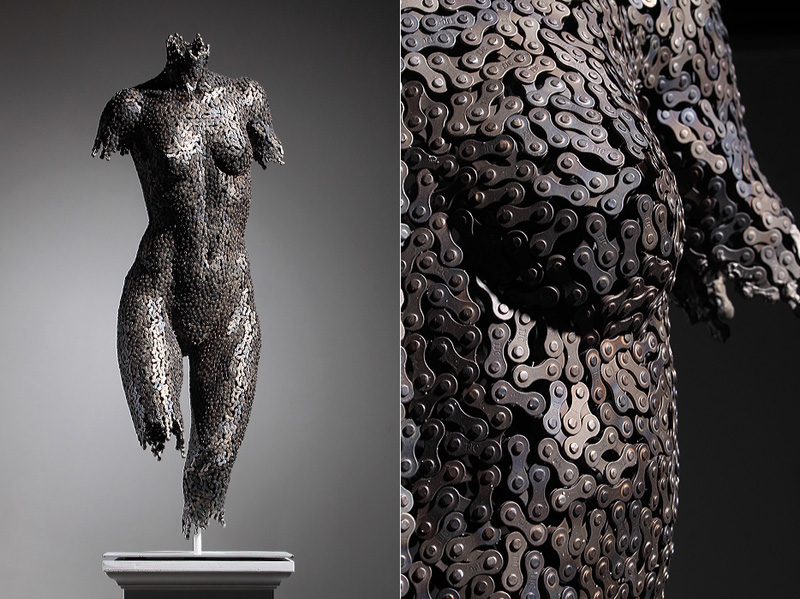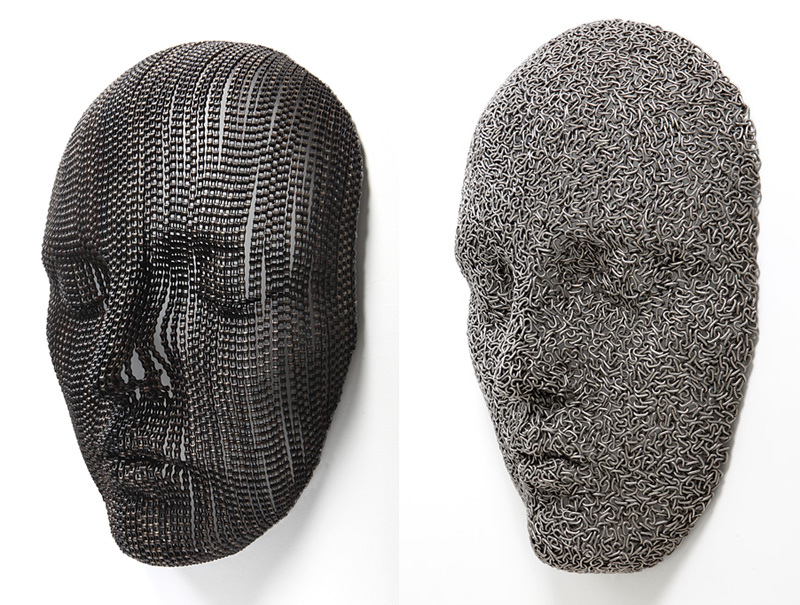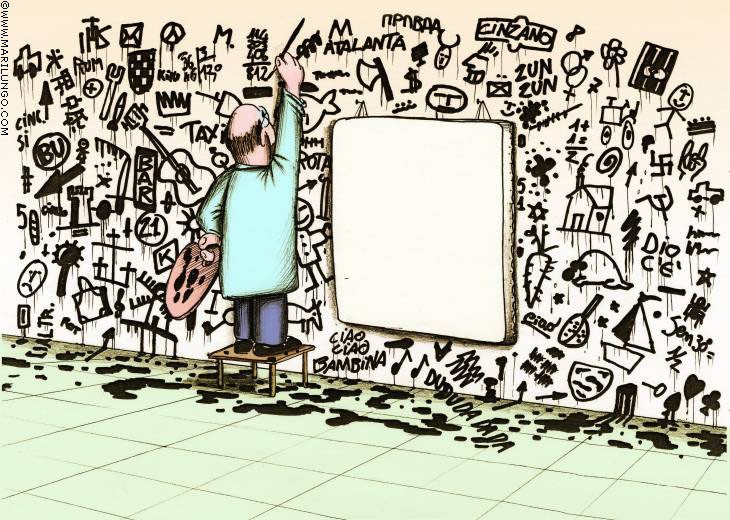En la década de 1850 y luego en 1886, la prestigiosa revista ilustrada francesa L'Illustration, presentó dos series de reportajes sobre visitas a estudios de artistas, acompañadas con la serie de grabados que podemos ver a continuación. Los textos están traducidos del ensayo de Rachel Esner "In the Artist's Studio with L'Illustration". Detalles al final del post.
In the 1850s and then in 1886, the French pictorial magazine L'Illustration, presented two series of reports on visits to artists' studios, together with the series of prints that we can see as follows. Text are excerpts of the essay written by Rachel Esner "In the Artist's Studio with L'Illustration". Details at the end of this post.
______________________________________________________________________
"El estudio de Dantan el Viejo. Grabado" / The Studio of Dantan the Older. Engraving"
L'Illustration 11 May 1850, 293, The Hague, Koninklijke Bibliotheek, T 1788
"Para conseguir una imagen más o menos completa de un artista, su obra y la dirección de su arte, uno debe visitar su estudio. No sólo porque la obra cobra todo su significado cuando se la ve en el sitio donde fue concebida y ejecutada; hay también una gran identificación entre el artista y su estudio; la propia vivienda permite hacer una evaluación completa de la persona que la ocupa ".
Henri Nocq, Tendances nouvelles: Enquête sur l'évolution des industries d'art (Paris: Floury, 1896). Citado y traducido al inglés por Rachel Esner
aquí.
"El estudio de Eugène Giraud. Grabado / The Studio of Eugène Giraud. Engraving"
L'Illustration, 6 July 1850, 29, The Hague, Koninklijke Bibliotheek, T 1788
Desde principios de 1950 y a intervalos irregulares durante los siguientes siete años, el crítico literario Augustin-Joseph du Pays visitó los estudios del escultor Antoine-Laurent Dantan (Dantan el Viejo), el pintor de género y retratista Pierre-François-Eugène Giraud, famoso por sus representaciones de España y Marruecos, Paul Delaroche, el pintor de temas históricos y de género Pierre-Jules Jollivet, también destacado por sus temas de género español, el pintor paisajista suizo Alexandre Calame, Rosa Bonheur, Eugène Delacroix, el pintor de "fantasía" Narcisse Diaz de la Peña (conocido generalmente como Narcisse Diaz) y el caricaturista-escultor Jean-Pierre Dantan.
La serie de
Paul Eudel apareció entre marzo y julio de 1886, y trata sobre los pintores Philippe Rousseau, Camille Bernier, Gérôme, Bouguereau, Detaille, Benjamin Constant, and Carolus-Duran.
Izq. "El estudio de Narcisse Diaz. Grabado / The Studio of Narcisse Diaz. Engraving"
L'Illustration, 19 March 1853, 185, The Hague, Koninklijke Bibliotheek, T 1788
Der. "El estudio de Paul Delaroche. Grabado / The Studio of Paul Delaroche. Engraving"
L'Illustration, 14 September 1850, 165, The Hague, Koninklijke Bibliotheek, T 1788
El estudio de Dantan El Viejo, por ejemplo, se encuentra en un barrio tranquilo y elegante cerca de Étoile, al lado del antiguo Folie Beaujon. El estudio de Giraud está situado al final de la calle, rodeado por un alto muro cubierto de afiches y dominado por árboles, mientras que el de Rosa Bonheur está situado en una parte de la Rue de L'Ouest, cerca del Jardín de Luxemburgo; Du Pays lo describe como aislado del mundo. Como Du Pays, Eudel enfatiza la tranquilidad y sentido de tiempo detenido sea cual sea el lugar que los artistas escogen para ubicar sus estudios. Rousseau, por ejemplo, trabaja en la Avenue Frochot donde, según escribe Eudel, a pesar de los grandes cambios de que ha sido objeto la zona, uno todavía espera encontrar un rapin con el pelo revuelto, vestido con pantalones a cuadros y un chaleco escarlata o un dandy de vieja escuela. Carolus-Duran vive y trabaja en el Pasaje Stanislas, no muy lejos de Port Royal, lo que lleva a Eudel a caracterizar el barrio como pseudo-monástico.
![]()
"El estudio de Pierre-Jules Jollivet. Grabado / The Studio of Pierre-Jules Jollivet. Engraving"
L'Illustration, 8 and 15 November 1850, 301, The Hague, Koninklijke Bibliotheek, T 1788
"El estudio de Alexander Calame. Grabado / The Studio of Alexandre Calame. Engraving"
L'Illustration, 17 and 24 January 1851, 44, The Hague, Koninklijke Bibliotheek, T 1788
Bouguereau, por ejemplo, no está en casa, pero es un artista generoso y seguramente no le importará si el autor echa un vistazo por los alrededores. Gérôme, por otra parte, está tan absorto en su trabajo que olvida que tiene un visitante, obligando al autor a, como él indica, "valientemente" encontrar el camino al estudio por sí mismo. El tropo de liminalidad y viaje temporal es más evidente en la visita a Carolus-Duran: aquí a Eudel se le requiere de hecho que levante una cortina para entrar en el estudio, y así encontrarse cara a cara con el artista, que - con su chaqueta de terciopelo negro, corbata, y un pelo largo y barba perfectamente peinados - recuerda "le escribe brillant du peintre tel qu'on rencontrait jadis (el tipo de pintor brillante que ya vimos una vez)".
"El estudio de Rosa Bonheur. Grabado / The Studio of Rosa Bonheur. Engraving"
L'Illustration, 1 May 1852, 284, The Hague, Koninklijke Bibliotheek, T 1788
A juzgar por las ilustraciones, el estudio de Calame es extremadamente espartano, y parece tener tanto una función profesional como familiar, mientras que el espacio de trabajo de Bonheur no es más que una extensión de su establo. Dado el exotismo de las viviendas de Gérôme (y sus temas), Eudel se asombra al descubrir que su estudio es "un estudio muy sencillo, un auténtico taller de trabajo", con poca decoración excepto alguna armadura japonesa. En el de Detaille, asimismo, las cualidades decorativas e incluso femeninas del espacio doméstico sólo sirven para señalar que el estudio en sí está dedicado exclusivamente al trabajo y actividades masculinas, lleno hasta los topes con parafernalia militar, uniformes y armas, así como todas las cosas que el artista necesita para su arte (bocetos escondidos en un armario, carteras, caballetes, partes de uniformes, etc.) Dada la suntuosidad de su arte, en el de Bouguereau Eudel se ve ligeramente sorprendido por el espacio de trabajo del artista: para su aparente asombro, no contiene objetos decorativos, ni muebles góticos, ni armas o armaduras.
A pesar de la reputación "bohemia" de su barrio, nada puede resultar más sobrio que el estudio de Rousseau, y nadie puede ser más sobrio que el propio artista, quien es tan modesto que incluso abre él mismo la puerta. Vestido con una gorra bastante maltratada y un chaleco cubierto de salpicaduras de pintura, el artista es "la simplicité même. Type sympathique d'une génération de peintres qui s'en va (la simplicidad personificada. Tipo simpático de una generación de pintores que desaparece)". De la misma manera, su estudio no es ni un tocador, ni un salón, ni un gabinete de curiosidades: "Está hecho para trabajar y nada más"
"El estudio de Eugène Delacroix. Grabado / The Studio of Eugène Delacroix. Engraving"
L'Illustration, 25 September 1852, 205, The Hague, Koninklijke Bibliotheek, T 1788
"In order to garner a more or less complete picture of an artist, his works, and his artistic direction, one must visit his studio. Not only does the oeuvre retain all its significance when viewed in the place where it was conceived and executed, there is also a striking resemblance between the artist and his studio; the dwelling itself permits one to make a thorough assessment of the man who occupies it."
Henri Nocq, Tendances nouvelles: Enquête sur l'évolution des industries d'art (Paris: Floury, 1896). Translation by Rachel Esner, citated here.
"El estudio de Dantan El Jóven. Grabado / The Studio of Dantan jeune. Engraving"
L'Illustration, 30 May 1857, 348, The Hague, Koninklijke Bibliotheek, T 1788
Beginning in 1850, at irregular intervals over the next seven years, the literary critic Augustin-Joseph du Pays visited the studios of the sculptor Antoine-Laurent Dantan (Dantan the Older); the genre- and portrait painter Pierre-François-Eugène Giraud, famous for his depictions of Spain and Morocco; Paul Delaroche; the history and genre painter Pierre-Jules Jollivet, also renowned for his Spanish genre subjects; the Swiss landscape painter Alexandre Calame; Rosa Bonheur; Eugène Delacroix; the "fantasy"18 painter Narcisse Diaz de la Peña – generally referred to as Narcisse Diaz (fig. 8); and the caricaturist-sculptor Jean-Pierre Dantan (Dantan the Younger).
"El estudio de Philippe Rousseau. Grabado / The Studio of Philippe Rousseau. Engraving"
L'Illustration, 6 March 1886, 161, The Hague, Koninklijke Bibliothe
"El estudio de Camille Bernier. Grabado / The Studio of Camille Bernier. Engraving"
L'Illustration, 20 March 1886, 184, The Hague, Koninklijke Bibliotheek, T 1788
Paul Eudel's series appeared between March and July of 1886 – the period of the Salon – and treats the painters Philippe Rousseau, Camille Bernier, Gérôme, Bouguereau, Detaille, Benjamin Constant, and Carolus-Duran. "El estudio de Jean-Léon Gérôme. Grabado / The Studio of Jean-Léon Gérôme. Engraving"
L'Illustration, 17 April 2886, 257, The Hague, Koninklijke Bibliotheek, T 1788
The studio of Dantan the Older, for example, is found in a quiet and elegant quarter near Étoile, close to the former Folie Beaujon. Giraud's studio is located at the end of a street, surrounded by a high wall covered in affiches and overhung by trees, while Rosa Bonheur's is situated in a part of rue de l'Ouest, near the Jardin du Luxembourg, which Du Pays describes as cut off from the world. Like Du Pays, Eudel emphasizes the quietness and sense of time having stood still wherever artists choose to locate their studios. Rousseau, for example, works in Avenue Frochot, where, Eudel writes, despite the many changes the area has now undergone, one still half expects to encounter a rapin with wild hair, dressed in checked trousers and a scarlet waistcoat or a dandy of the old school. Carolus-Duran lives and works in the passage Stanislas, not too far from Port Royal, which leads Eudel to characterize the neighborhood as pseudo-monastic.
![]()
"El estudio de William Bouguereau. Grabado / The Studio of William Bouguereau. Engraving"
L'Illustration, 24 April 1886, 265, The Hague, Koninklijke Bibliotheek, T 1788
"El estudio de Edouard Detaille. Grabado / The Studio of Edouard Detaille. Engraving"
L'Illustration, 22 May 1886, 269, The Hague, Koninklijke Bibliotheek, T 1788
To judge by the illustrations, Calame's studio is extremely Spartan, and appears to have both a professional and a familial function, while Bonheur's workspace is simply an extension of her stable. Given the exoticism of Gérôme's living quarters (and his subject matter), Eudel is astonished to find that his studio is "un atelier fort simple, un veritable atelier de travail," with little decoration save some Japanese armor. At Detaille's, too, the decorative and even feminine qualities of the domestic space only serve to point up that the studio itself is dedicated purely to work and masculine pursuits, filled to the brim with military paraphernalia, uniforms, and weapons, as well as all the things the artist needs for his art – sketches tucked away in a cabinet, portfolios, easels, bits of uniforms, etc. Given the sumptuousness of his art, at Bouguereau's Eudel is initially slightly taken aback by the artist's working space: to his apparent amazement it contains no decorative objects, no Gothic furniture or arms and armor.
Despite the "Bohemian" reputation of his neighborhood, nothing could be more sober than Rousseau's studio, and no one could be more sober than the artist himself, who is so modest that he even opens his own door. Dressed in a battered felt cap and a vest covered with splatters of paint, the artist is "la simplicité même. Type sympathique d'une génération de peintres qui s'en va." Correspondingly, his studio is neither a boudoir, nor a salon, nor a cabinet of curiosities: "Il est fait pour le travail est rien de plus"
"El estudio de Benjamin Constant. Grabado / The Studio of Benjamin Constant. Engraving"
L'Illustration, 12 June 1886, 424, The Hague, Koninklijke Bibliotheek, T 1788
"El estudio de Carolus Duran. Grabado / The Studio of Carolus-Duran. Engraving"
L'Illustration, 3 July 1886, 12, The Hague, Koninklijke Bibliotheek, T 1788
Resumen
Éste artículo explora las dos series de visitas a estudios de artistas que aparecieron en la famosa revista francesa ilustrada L'Illustration en la década de 1850 y en 1886. Un examen en profundidad tanto de los textos como de las imágenes revela los tropos verbales y visuales utilizados para caracterizar a los artistas y sus espacios, vinculándolos a las nociones más amplias de "el artista" - sus características morales, conductas y prácticas artísticas -, así como a la política del mundo del arte y la ideología (burguesa) de L'Illustration. El objetivo es descubrir no sólo el idioma, sino también la mecánica de la "mediatización" de la imagen del artista en este período crucial.
Abstract
This article explores the two series of visits to the artist's studio that appeared in the famed French illustrated magazine L'Illustration in the 1850s and in 1886. An in-depth examination of both the texts and images reveals the verbal and visual tropes used to characterize the artists and their spaces, linking these to broader notions of "the artist" – his moral characteristics, behaviors, and artistic practice – as well as to the politics of the art world and the (bourgeois) ideology of L'Illustration. The aim is to uncover not only the language but also the mechanics of the "mediatization" of the image of the artist in this crucial period.
___________________________________________________________
La Dra. Esner es especialista en arte alemán y francés de fines del siglo XIX y en crítica de arte, con especial interés en la interacción entre el arte y la política; historia de la recepción, formación de la imagen del artista en el modernismo y en la práctica histórica del arte; teoría e historia del arte feminista y marxista y en historia de la fotografía documental.
Dr. Esner is a specialist in German and French art of the late nineteenth century and in art criticism, with a particular interest in the interaction of art and politics;the history of reception; the formation of the image of the artist in modernism and in art historical practice; feminist and Marxist art theory and history; and in the history of documentary photography.
___________________________________________________________
Más sobre William Bouguereau en "El Hurgador" / More about William Bouguereau in this blog:
Más sobre Rosa Bonheur en "El Hurgador" / More about Rosa Bonheur in this blog:
Más sobre Jean-Léon Gérôme en "El Hurgador" / More about Jean-Léon Gérôme in this blog:
Muchas gracias a
Rachel Esner por su autorización para utilizar partes de su ensayo en éste post.
Thanks a lot to Rachel Esner for her permission to use parts of her essay in this post.





























































.jpg)























,+1897.jpg)































_.jpg)





















+2013.jpg)








,+2007+2.jpg)



+2011+840cm+x+600cm+x+660cm+mixed+media.jpg)





























































+2.jpg)










































































































































































,+Rhinoceros,+For+Noah%E2%80%99s+Ark+Series.+Mezzotint,+1971.+Edition+25-75.+Signed,+titled,+and+numbered+in+pencil,+8-1-2+x+8-3-8+inches..jpg)







.jpg)




